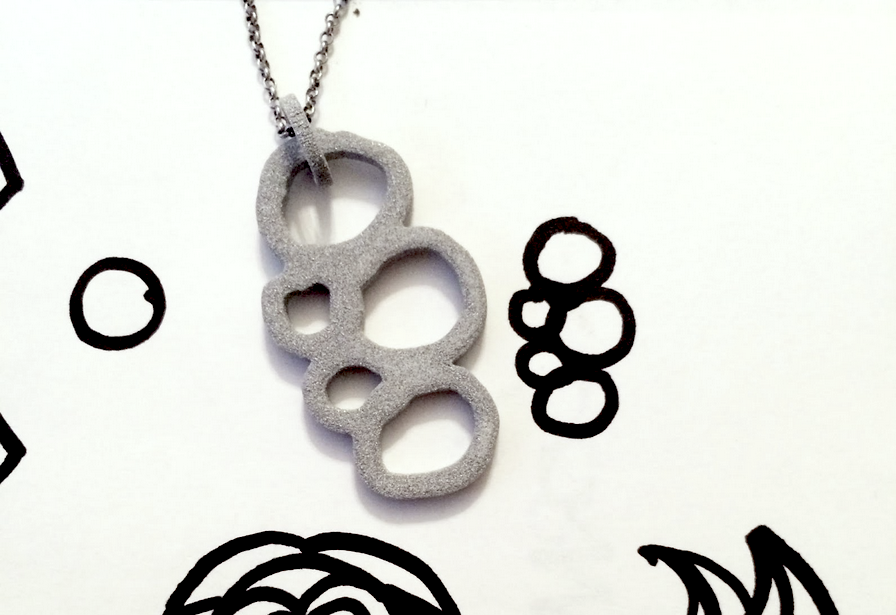
by Corinne Iozzio
When you look at some of the intricate custom designs 3D modelers are printing these days, it might seem like getting into rapid prototyping is too complicated for any beginner to tackle. Not so. Even with only the most basic set of art and graphic design skills, you’ll be able to create your first 3D model in no time. Don’t believe us? Read on for some extra convincing.
The simplest 3D designs start on paper. You might set out to jot down an idea for a pair of earrings or a bottle opener, but if you’re prone to doodling, you probably have dozens—even hundreds—of designs dotted throughout your notebooks and sketchbooks. Each one of those is a kernel of an idea for a 3D design. Use our tool to convert any doodle to 3D, or watch our Skillshare class ($9) to learn how to tweak and improve doodles digitally.

A simple Sharpie drawing became this loopy pendant. Corinne Iozzio
Photoshop isn’t just about touching up flat images anymore. You can use all your favorite (and familiar) image-editing tools, such as brushes and gradients, to tweak the color and texture of existing 3D designs. (If you’re feeling adventurous you can even start a new model by “extruding” a 3D design from a 2D picture.) Bonus: New 3D printing tools in the latest version of Photoshop Creative Cloud includes an option to print directly to Shapeways.
While Photoshop primarily sees images as pixels–tiny blocks of color that together compose an imageIllustrator sees vectors—a graphical description of mathematical data. Vectors allow you to transform the size and shape of an object, while keeping it crisp and sharp. The language of vectors imports easily into 3D design software, such as the very basic TinkerCad, which means you can model a company logo or family crest in a snap.
When you pass a beautiful shape—a flower, a fencepost, a puppy’s adorable little nose—you can’t help but take a picture (or many pictures) of it. Here, you have two choices: Convert a single shot into a simple 3D design the way you would a doodle, or use an app, such as, Autodesk’s 123D Catch, to convert a set of images into a dynamic 3D model.
You Already Design in 3D
Many novices have careers that give them the DNA they need to start 3D printing—even if they don’t realize it. We’re looking at you, architects, motion graphics designers, animators, and engineers. Trust us, you’re only a hop-skip-and-jump away from exporting a rendering or animation file for 3D printing. Check out our tutorial for a blow-by-blow walkthrough of how to prep your models for the physics of a 3D printer.
Want some even better news? Many of the tools we’ve mentioned are free to use, so there’s nothing to lose if you want try your hand at a 3D print. And if you hit a snag along the way, one of our tutorials to help you get back on track.


